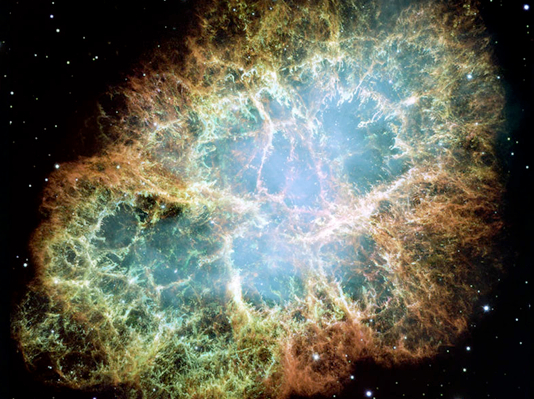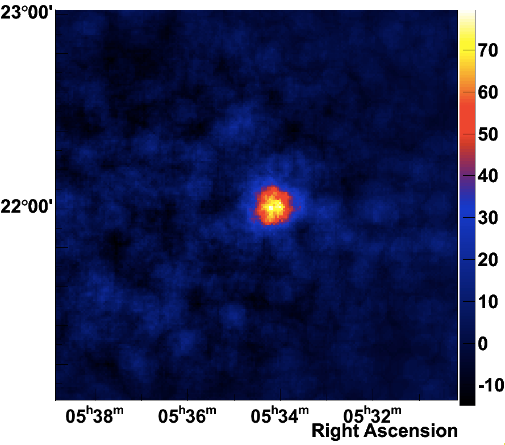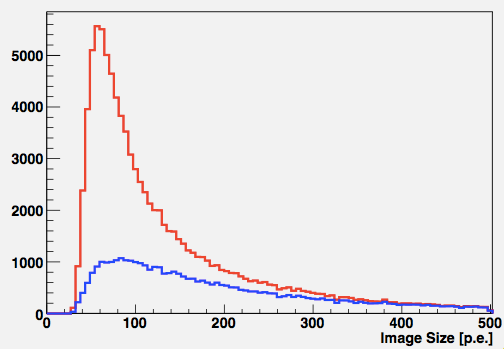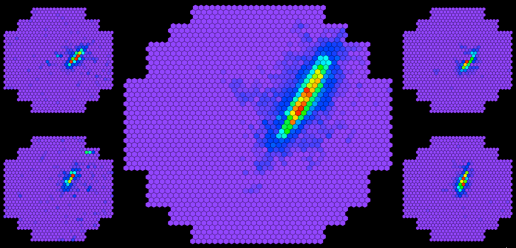The Crab Nebula seen with the H.E.S.S. II telescope
December 2012

Virtually every new instrument for very high energy gamma ray astronomy is pointed at the Crab Nebula when starting operation. While the Crab Nebula is no longer the 'standard candle' due to the variability detected at least at GeV energies, it still serves as a reference source. Obviously, the H.E.S.S. II telescope - as the 5th H.E.S.S. telescope also referred to as CT5 - was also pointed at the Crab once visible. While work on calibration, pointing corrections, and analysis algorithms using real data is still in its early stages, it was a nice Christmas present for the H.E.S.S. Collaboration to see the Crab detected with CT5. Fig. 1 shows a sky map derived from a single observation run, based on CT5 data alone; this so-called 'Mono Mode', where no coincidence with any of the 'small' H.E.S.S. telescopes (CT1 to CT4) is requested, provides the lowest energy threshold. Lowering the energy threshold for ground-based instruments and enlarging the energy coverage of the H.E.S.S. instrument was one of the main motivations behind building the new telescope.
Energy threshold of the instrument is lowered not only when CT5 is used in 'Mono Mode', but also for stereo imaging of air showers using CT5 in coincidence with one of the small telescopes: Fig. 2 demonstrates that the distribution of light intensity in the Cherenkov images of one of the small telescopes - proportional to the energy of the primary particle inducing the air shower - for two cases: when the telescope detects a shower in coincidence with another small telescope (blue line) and in coincidence with CT5 (red line). The dramatic enhancement in the number of detected low-energy air showers is evident. H.E.S.S. thus provides three ways to detected gamma rays: using the images of CT5 alone results in lowest energy threshold but no stereoscopic imaging; using CT5 in coincidence with one of CT1 to CT4 allows stereoscopic imaging with reduced energy threshold compared to H.E.S.S. Phase I; using the intense CT5 images in coincidence with several of CT1 to CT4 improves precision for higher-energy gamma rays - Fig. 3 demonstrates once more how much better shower images are resolved with CT5.


